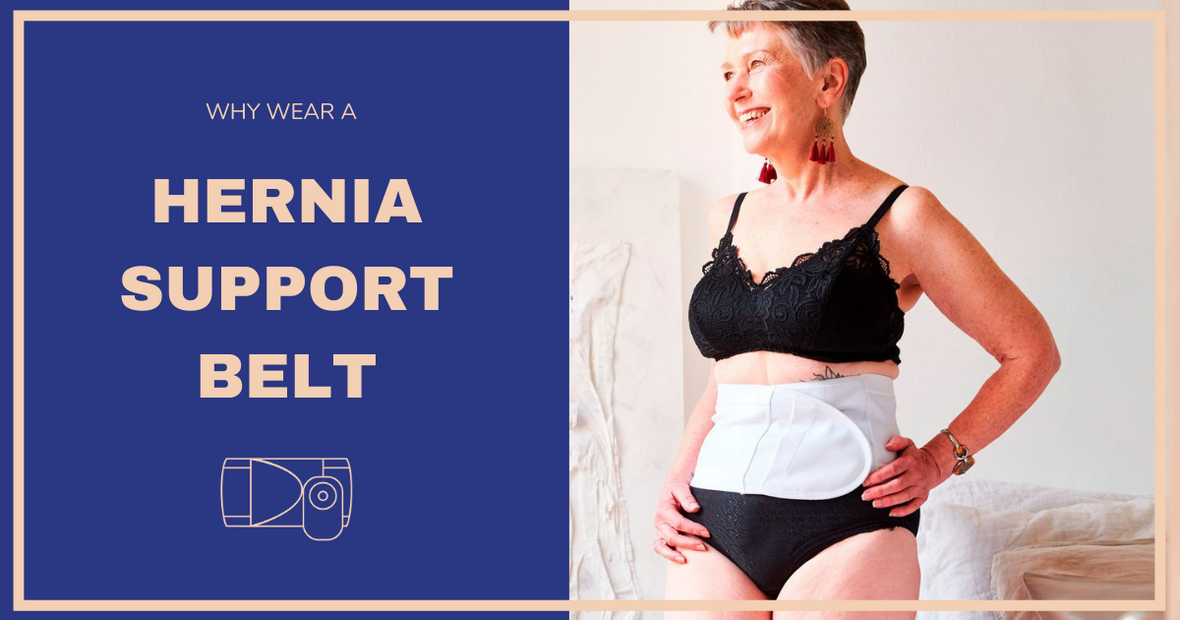
Why Wear a Hernia Support Belt?
MyOstomy
What is a Hernia?
A hernia occurs when an organ or tissue protrudes through a weakened area in the body’s structure. These often develop in the abdomen or groin (inguinal hernias) due to muscle weakness. In the case of parastomal hernias, which affect ostomates, the protrusion occurs near the surgery wound after surgery, as the abdominal muscles have been cut through and weakened.
They are a very common medical condition, in fact, nearly 50% of ostomates may develop a hernia depending on their type of stoma.
What Causes Hernias?
Hernias can occur at any age and can result from various factors, including:
- Genetics
- Improper fetal development
- Excessive muscle strain
- Physical trauma or injury
- Aging (as muscles weaken over time)
Other contributors include:
- Obesity (increased abdominal pressure)
- Tumors or fluid buildup in the abdominal cavity
- Poorly healed wounds
Daily activities like lifting heavy objects, intense coughing, or straining during bowel movements can increase abdominal pressure and contribute to hernia development. If you do these movements often, a hernia support belt is recommended for you.
How Do Hernia Support Belts Help?
A hernia support belt is a tight, belt-like compression garment designed to provide mechanical support and reduce discomfort by applying pressure to the weakened area.
Key Benefits of Hernia Belts:
- Helps keep the hernia in place by exerting gentle pressure
- Minimizes discomfort from bulging and swelling
- Reduces the risk of ostomy appliance leaks (for parastomal hernias)
- Encourages confidence in physical activity (lifting, exercise, sports)
- Prevents further enlargement of an existing hernia
Hernia belts are typically worn throughout the day but are not necessary at night when abdominal pressure is lower.
Hernia Belts as a Preventative Tool
- Support weak abdominal areas
- Minimize over-exertion & muscle fatigue
- Lower the risk of developing a hernia
The Unisex Anti-Roll Mesh Hernia Belt from CUI is an ideal choice for prevention, offering moderate support and high breathability for all-day comfort.
How to Wear a Hernia Belt Properly
For optimal support, follow these steps when putting on a hernia belt:
- Lie down – This allows gravity to assist in reducing the hernia protrusion.
- Position the belt directly over the hernia – Ensure it is tightly wrapped around the waist.
- Secure it tightly – The belt should apply gentle but firm pressure.
Pro Tip: For parastomal hernia belts, we recommend getting it professionally fitted to ensure the best possible support and comfort.
Hernia Belts for Parastomal Hernias
Parastomal hernias can significantly impact ostomy appliance fit, leading to leaks and discomfort. That’s why hernia belts are specially designed with ostomy supplies in mind. With adjustable openings for ostomy pouches, while being strong enough to apply needed pressure.
- A pre-cut, adjustable hole to accommodate various stoma sizes
- Maximum support for hernia management
- Breathable, comfortable 4-way stretch fabric for all-day wear
This design ensures proper stoma function while keeping the hernia supported. Check out the varieties here.
Hernia Belts: A Long-Term or Short-Term Solution?
- A temporary solution before undergoing hernia surgery
- A long-term solution to minimize further hernia enlargement for those unable to have surgery.
Final Thoughts: Should You Wear a Hernia Belt?
If you have a hernia or engage in activities that strain your core, a hernia support belt could be a valuable tool for comfort and protection.
Already have a hernia? A belt can help manage discomfort and prevent further growth.
Concerned about developing one? Wearing a belt during physical activity can help protect your abdominal muscles.
Still have questions? Contact us! We are happy to help you find the best fit for your needs.



